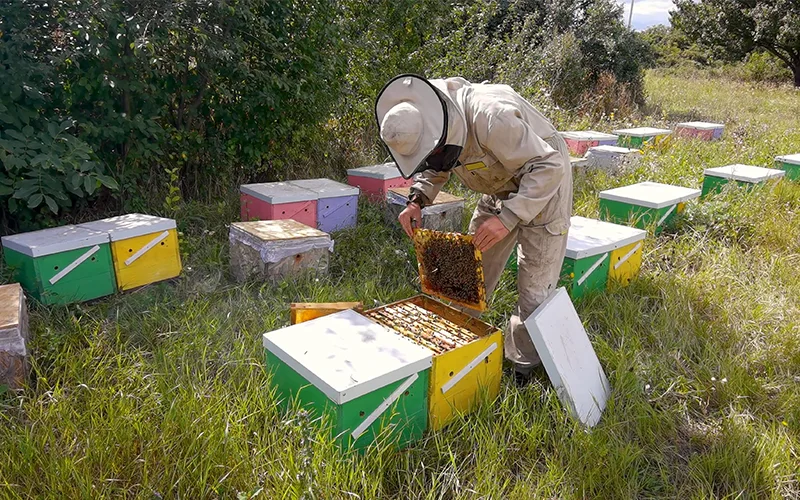Honey production is a fascinating process that involves the diligent work of bees and the careful management of beekeepers. Let’s explore the various aspects of honey production, from beekeeping practices to the extraction and processing of honey.
- Beekeeping: Beekeeping, also known as apiculture, is the practice of raising and caring for bees to produce honey. Beekeepers provide suitable habitats for bees, such as beehives or apiaries, where the bees can live and thrive. These hives are designed to mimic the natural nesting environment of bees and provide them with protection from predators and the elements.
- Bee Colony: A bee colony consists of three main types of bees: the queen bee, worker bees, and drones. The queen bee is responsible for laying eggs and ensuring the continuity of the colony. Worker bees are female bees that undertake various tasks within the hive, such as collecting nectar and pollen, building and maintaining the hive, and caring for the young. Drones are male bees whose primary role is to mate with the queen.
- Nectar Collection: Worker bees collect nectar from flowers as their primary source of food. They use their long tongues, known as proboscis, to extract the nectar from the flowers. The nectar is stored in a specialized honey stomach, where it mixes with enzymes that start the process of converting the nectar into honey.
- Honey Production Process: Back at the hive, worker bees transfer the collected nectar to other worker bees through a process called regurgitation. During this process, the nectar is broken down further by enzymes and mixed with bee saliva. The bees then spread the nectar across the honeycomb cells and fan their wings to aid in the evaporation of moisture, which thickens the nectar and transforms it into honey.
- Honeycomb Construction: Honeycomb is a structure made of beeswax that serves as storage for honey, pollen, and bee larvae. Beeswax is secreted by worker bees from specialized glands located on their abdomens. They chew and manipulate the wax, forming hexagonal cells that provide efficient storage space.
- Honey Extraction: Once the honey has ripened and the moisture content has reached the desired level (around 17-18%), it is ready for extraction. Beekeepers carefully remove the honeycomb frames from the beehives and use specialized equipment, such as honey extractors or centrifuges, to extract the honey from the comb. The honey is spun out of the frames, collected, and filtered to remove any impurities such as beeswax or bee parts.
- Honey Processing: After extraction, honey may undergo minimal processing to improve its clarity and consistency. It may be lightly heated to facilitate straining or filtering and remove any remaining impurities. However, it is essential to note that excessive processing can diminish the natural qualities and health benefits of honey.
- Packaging and Storage: Once processed, the honey is typically packaged in jars, bottles, or other containers suitable for retail or wholesale distribution. It is important to store honey in a cool, dry place to prevent crystallization and maintain its quality over time.
- Types of Honey: Honey comes in various types, each with its distinct flavor and color profile. The characteristics of honey depend on the floral sources from which the bees collect nectar. Examples include clover honey, wildflower honey, lavender honey, and Manuka honey.
- Sustainable Practices: Responsible beekeeping practices are essential for the sustainability of honey production. This includes ensuring a healthy bee colony, providing a diverse range of floral sources for bees to forage from, and avoiding the overexploitation of honeybee populations. Sustainable beekeeping supports the preservation of pollinators, biodiversity, and the ecological balance of ecosystems.



